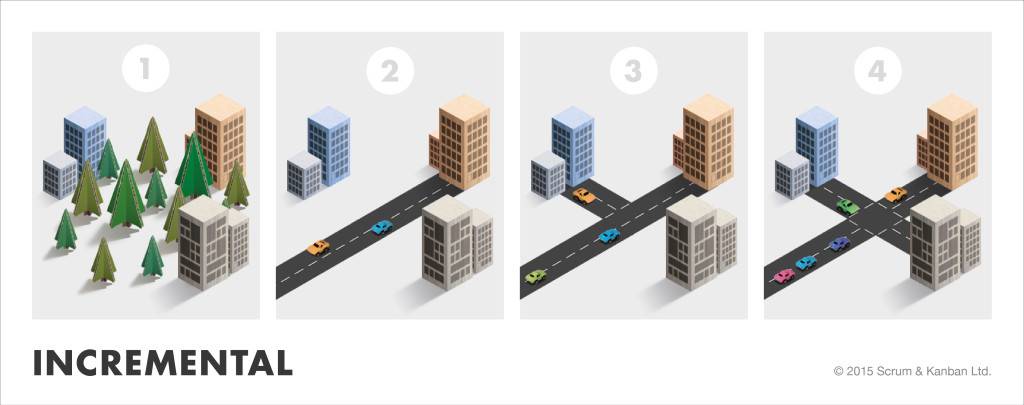Many of you will be familiar with Jeff Patton’s explanation of iterative and incremental using the Mona Lisa.
I’ve used it many time to explain the difference between iterative and incremental. But I’ve always thought there’s a better analogy out there. I’ve also wanted to compare to a big bang approach, but there isn’t an illustration for da Vinci doing that.
So, along with the help of an amazing illustrator, Tim Smith, we’ve come up with some drawings using an analogy of road building.
Many approach building anything in an all-or-nothing manner; Keep the site closed until everything is ready for use. That’s what we’re calling a big bang approach.
Sometimes, you want to build a road iteratively: a dirt track will suffice to begin with, moving to gravel, then upgrading to tarmac as time allows.
Other times, the road from A to B may be most important. So you build incrementally: the road from A to B first, then the road to C, then finally to D.
So what do you think?
How could we improve our illustrations? We have some ideas, but would really like to hear what you say before we make further changes.
Now which kind of approach is that?




I use the terms Iteractive and Incremental quite differently to Jeff, almost the reverse in fact. Another time….
I think your diagram in the iterative model is too subtle. I look at it and its like one of those kids “spot the difference” puzzles.
The other point is, and maybe your pictures are better at this than Jeff’s, it is possible that the partial piece is all that is needed.
i.e. with the Mona Lisa, a high fidelity bottom left hand corner isn’t a lot of us. But consider your anaology, a decent road and 1 building is potentiall useful. Maybe it makes sense to go deep – high fidelity – on one part of the work before you go low fidelity on across a borad area. Different roiutes through the puzzle.
Pingback: The making of IIBB | Scrum & Kanban
Pingback: How iterative Product Discovery helps you solve the right problem - ACA Blog